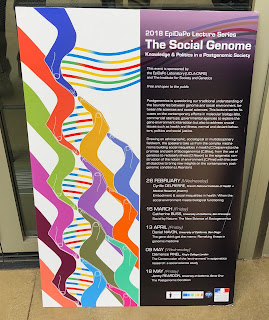Week 3: Robotics and Art
 |
| Humanlike Monster: Frankenstein |
Before this week’s lectures and readings, I was under the impression that the Industrial Revolution revolutionized only the manufacturing processes, which undoubtedly changed the way people think and live forever. However, I have never considered its direct impact on arts.
As Professor Vesna had mentioned, we can see the effect of industrialization on books and movies as early as the 1820s (Vesna, 2012). In Frankenstein, Mary Shelley centers on a mad scientist who tries to create life but ends up producing a manlike monster instead (Shelley, 1998). Personally, I believe that Shelley may have written the book as a response/solution to the employers’ horrible treatments of their workers as if they were machines. Had Victor Frankenstein been successful with his unorthodox experiment and created a well-behaved being, he would have solved the issue of labor inefficiency as well as improved humankind. People then would have had as much extra help as needed and that was how the ideas of robots came about (Vesna, 2012).
 |
| Robocop |
Another more modern movie is Robocop that came out in 1987. It is about a police officer, who is murdered but is later revived to become a cyborg law enforcer (Robocop, 1987).
A cyborg is believed to be a being with both organic makeup as well as mechanics. The mechanics are meant to restore function or enhance one’s ability (Kline, 1960). Unlike robots, cyborgs are alive. While the two types may differ, they nonetheless serve the same purpose: to improve efficiency.
Some people suggest that Iron Man is also a cyborg — a fact that I agreed. If I am not mistaken, in the comics, Tony Stark needs the chest plate to survive, thus making him a prime example of cyborg. If this theory is to be believed, then many of us human beings would also qualify as cyborgs for people have undergone surgery to have an artificial heart, legs, etc. (Kennedy, 2011).
From these examples, we can see that industrialization not only has impacts on technology and arts but also on how us humans evolve.
 |
| Tony Stark's Chest Plate |
 |
| Artificial Heart |
Works Cited
Kennedy, Pagan. “The Cyborgs in us all.” The New York Times. (14 Sep, 2011).
Retrieved from https://www.nytimes.com/2011/09/18/magazine/the-cyborg-in-us-all.html
Kline, Nathan. “Cyborgs and Space.” Astronautics. 1960.
Robocop. Directed by Paul Verhoeven, performances by Peter Weller, Nancy Allen, Orion Pictures, 1987.
Shelley, Mary. Frankenstein. Oxford ; New York :Oxford University Press, 1998. Print.
Vesna, Victoria. “Robotic Introduction.” Cole UC online. Youtube, 26 Mar, 2012. Web. 18 Apr, 2018.



It's very interesting how you noted how science influenced the arts in books like Frankenstein. You also make a good point about how robots blur the line between human and machine. With the dawn of the information age, robotics has really taken off and once again we see the integration of machine and man not just physically, but also conceptually. For instance, people like Walter Benjamin define an original art piece based on how there is only one copy of it and how the original art piece was created through a very specific ritual. With the advent of robotics, the definition of an original artwork blurs as what is considered original changes. Artists can feature pieces of machinery as art even though they didn't go through a ritual to make the machines and artists nowadays use machines to produce artworks and those artworks are reproduced digitally even so there is no true original by Walter Benjamin's notions. It is very interesting how robotics are shaping both mankind and mankind's conceptions.
ReplyDelete